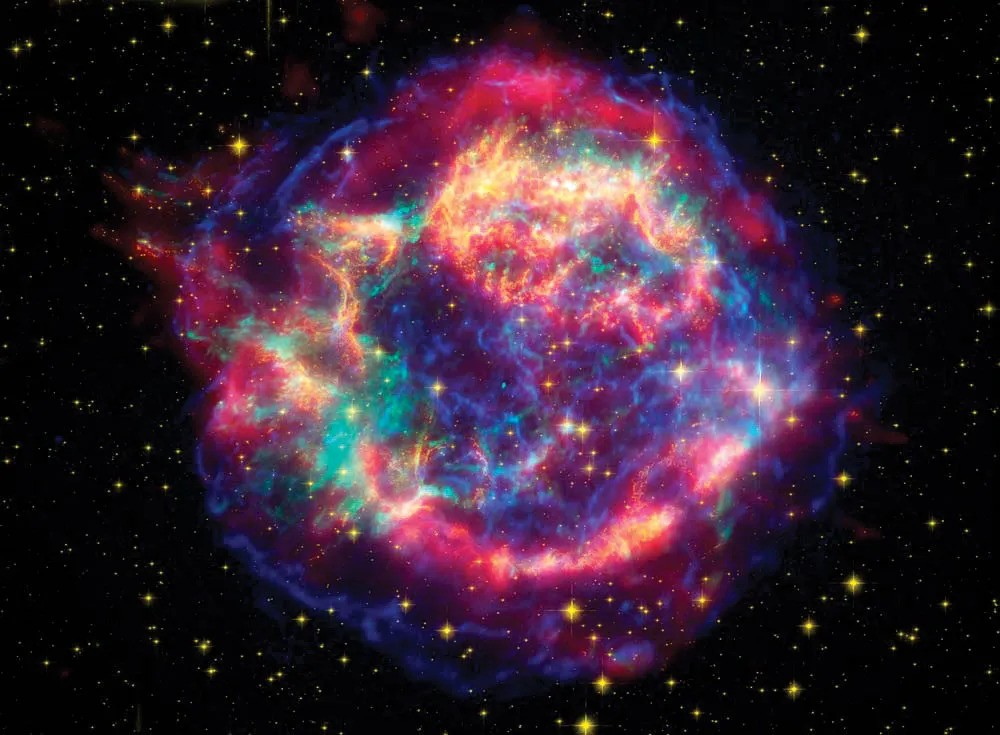Scientists have used a new method to search for supernova remnants. It is built around the use of the powerful MUSE spectrometer on the Very Large Telescope in Chile. Thanks to it, scientists have discovered hundreds of new objects.

Oxygen in supernova remnants
Using a new method that utilizes the capabilities of the Multi Unit Spectroscopic Explorer (MUSE), astronomers have discovered 307 new supernova remnants, including seven rare oxygen-rich ones. The findings were presented in a research paper published on September 10 on the arXiv preprint server.
Supernova remnants (SNRs) are diffuse structures that expand as a result of a supernova explosion. They contain ejected material expanding from the explosion and other interstellar material picked up by the shock wave from the exploded star.
Some supernova remnants show strong oxygen emission in visible light, and because of this are known as oxygen-rich supernova remnants. However, oxygen-rich SNRs are rare. To date, only eight such objects have been discovered in our Galaxy and the Magellanic Clouds. Moreover, the nature of these SNRs and their relation to specific supernovae (SNe) are still incompletely understood.
Amazing supernova remnants
Now a team of astronomers led by Timo Kravtsov of the European Southern Observatory (ESO) in Chile reports new findings that could deepen our knowledge of oxygen-rich supernova remnants. Using a new SNR detection method, they were able to discover hundreds of new remnants using MUSE on ESO’s Very Large Telescope (VLT), including those that emit oxygen.
In their results, the team has identified 307 supernova remnants in different galaxies in the PHANGS-MUSE survey, which is part of the Physics at High Angular Resolution in Nearby Galaxies (PHANGS) project. From this sample, they found oxygen emission in 35 supernovae, and upon further investigation, seven of them were found to be oxygen-rich because they exhibited extremely strong and broad oxygen lines.
According to this work, most of the detected SNRs have analogs in X-rays with luminosities in the range of 10-100 undecillion erg/s. Astronomers note that this is close to the boundary of ultraluminous X-ray sources (ULXs) and to the Eddington limit for stellar neutron-mass objects.
Further plans
In addition, the researchers searched for known supernovae at their locations in the sample because of the similarities between the oxygen-rich supernovae detected and old supernovae/young supernovae stars. However, such SNe were not found.
Summarizing the results, the authors of the paper said their study once again highlighted the rarity of oxygen-rich supernova remnants. They plan to extend their new method to other neighboring galaxies, hoping to detect more oxygen-rich supernovae, which could shed more light on the origin and properties of these remnants.
According to phys.org


